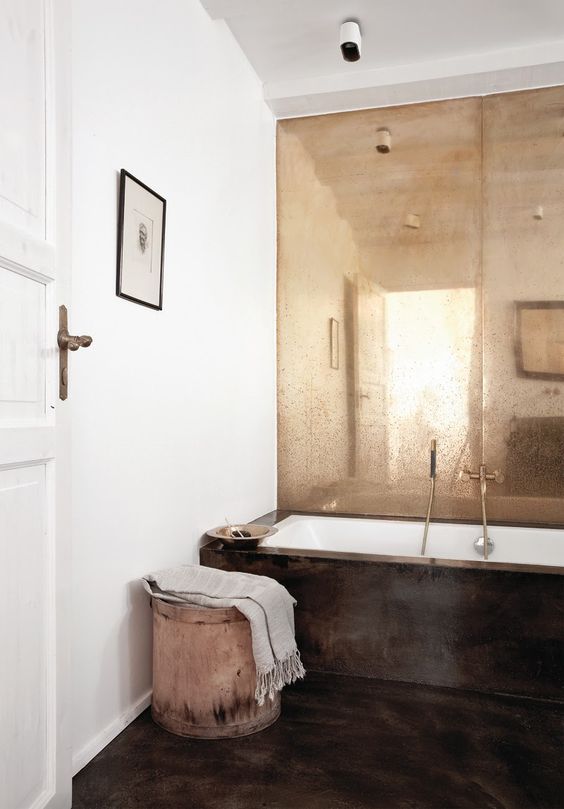
The technique of foxing a mirror (artificially ageing it) is a time honoured tradition that is still as popular now as ever. The flattering light and soft focus image they reflect make them a luxurious addition to any interior, and as the genuine article (ravaged by time) becomes increasing rare, due to fragility, modern reproductions are just as atmospheric and far easier on the pocket.

Panel available from Glass of Bath
So how is it made:
An antiqued mirror is glass that has been ‘silvered’ (one side of it is merged with silver nitrite, or reflective element such as mercury. The vintage look is then created by damaging the silver surface using abrasive or chemical substances until it achieves an attractive patina. The result will always be unique.
As this effect can be applied to any glass, you can have antiqued splash-backs, shower panels, steps or glass sliding doors – any surface you desire that can be manufactured in a glass of some sort. The silvering can also be shaped, so you can achieve stunning curves or apply it to surface such as vases. Most commonly it is framed and used in places where it is more of a feature than a practical object. Great for admiring your outline, not so good for spotting food in your teeth.
As mirrored glass is usually created by a craftsman (although it’s a fun hobby and suitable for amateurs) there are a wide variety of finished available, different degrees of abrasion, colours, tints and decoupage, applied heavily or lightly will greatly diversify your product.
The current trend for mirrored glass is to decorate with tiles. Sicis have long been the master of the glass tile (just wait till you see the glass mosaic bathroom we are currently installing) but hot on their heels are design staples Fired Earth and new comers Original Style. Or you could stick with the experts at The Antique Mirror Company.

Brass tinted panel in bathroom. Image from Pinterest, origin unknown

Kitchen Wall Panel and Splash Back. Image from Pinterest, origin unknown


